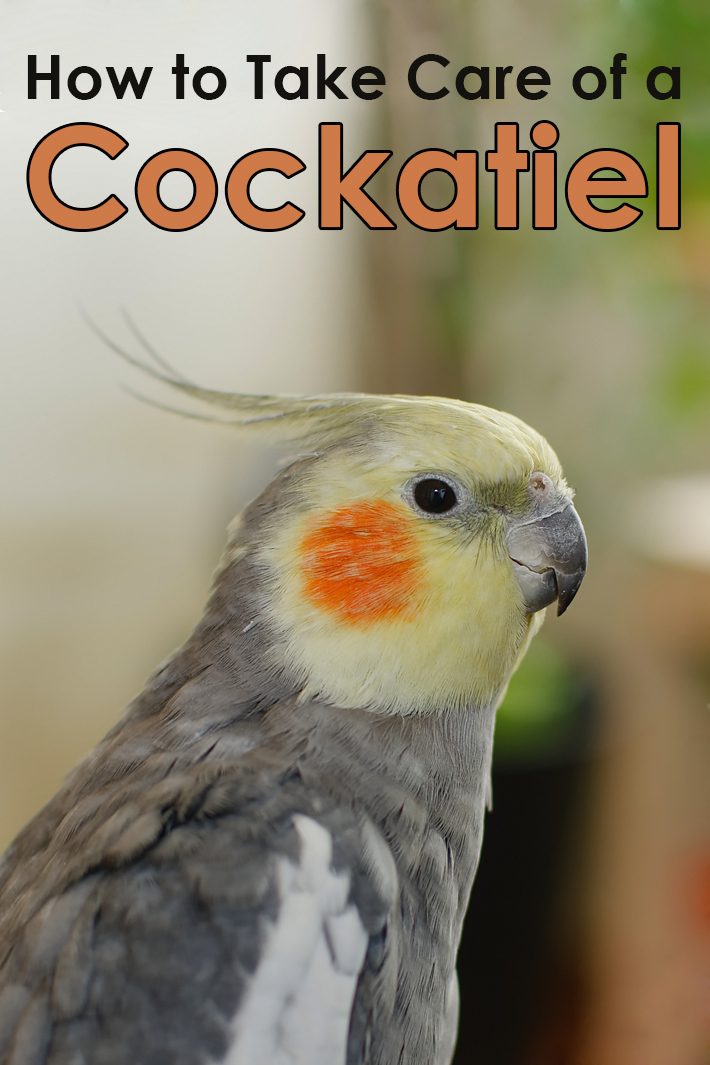
Cockatiel is the smallest member of the cockatoo family
Getting a new cockatiel can be the beginning of a joyful experience. You can look forward to many years of pleasure with your bird, if you learn how to care for it properly. Your investment in time will be paid back a hundred fold by a healthy, happy and lovable pet.
Normal male cockatiel have bright orange cheek patches and a yellow face, while female have a grey face with dull orange cheeks. Many color mutations are available, some of these can be difficult to sex visually.
Cockatiel Diet
Wild cockatiels normally feed on seeds, grasses, leaves and bark (from trees, bushes, and other vegetation). Additionally, cockatiels will eat grubs and different insects. Birds in captivity are less active and thus need less energy. However, like their wild brothers, they also require a varied diet.
Cockatiels have been known to live around 30 years if given a healthy diet. I personally know of cockatiels that are in their mid twenties. Seeds are high in fat and low in nutrition. Birds fed a mainly seed diet, will most likely not live to see their 15th birthday, many of them dying from fatty liver, bacterial/viral/fungal infections, or just malnutrition.
Experts in the field of aviculture and veterinarians (as well as pellet manufacturers) often recommend that pellets should make up at least 90% of your bird’s diet. I have not found a pellet that my birds really like. I have also found that if my birds are on diets consisting of totally pellets, they tend to have more trouble with gout.
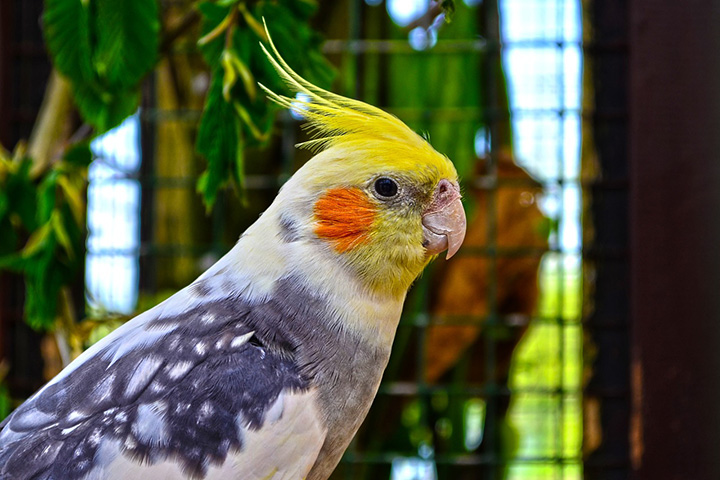
Though all my birds do eat pellets, the amount is not more than 70% or 80%. The remainder of the diet consists of some seeds and all the fresh, frozen or canned (without salt) vegetables they want. Some vegetables and other foods my birds like are peas, corn (on the cob is their favorite), carrots (either mashed or shredded is preferred), leafy green vegetables such as turnip, beet or dandelion greens, broccoli (they prefer the tops), mixed vegetables, red peppers, sweet potatoes (cooked), rice, pasta, and some cereals such as Total, Shredded Wheat, Cheerios and others which are low in sodium and sugar. I don’t allow my birds to have foods which are high in sodium or sugar due to the possibilities of salt toxicity or health problems from sugar. My cockatiels won’t eat a lot of fruits, but most of them will at least taste oranges, apples, kiwi, bananas, mangos, strawberries, and some melons. They also love cranberries.
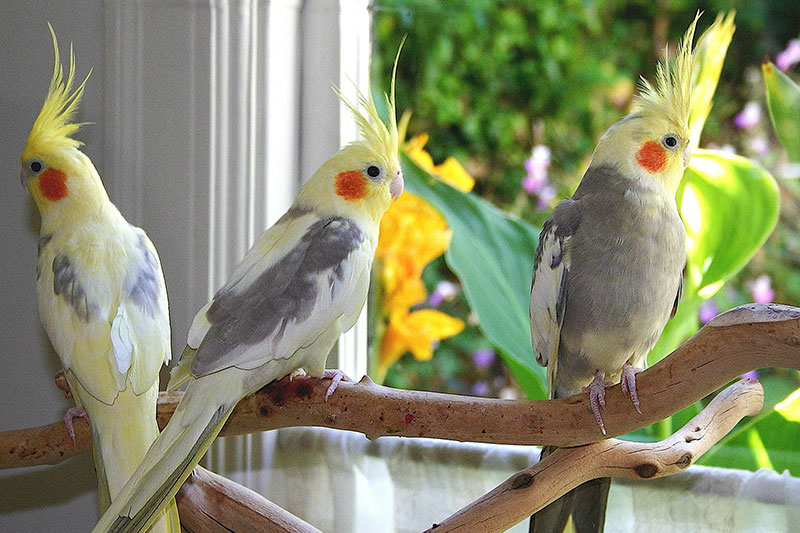
Since vitamin A deficiency is frequently found in cockatiels, I try to provide vegetables that have a high amount of vitamin A or Beta-Carotene in them. These include carrots, leafy green vegetables, sweet potatoes, and pumpkin. I’ve found my birds love breads, muffins and cookies with carrots, pumpkin or sweet potato in them. And, for those picky eaters who prefer not to eat pellets, I generally switch them by putting the pellets in their other foods (such as the breads and cookies) until I know they are eating them. At present, every bird in my home eats pellets to some extent.
I also sprinkle Spirulina (I’ve used it for almost 5 years of use with no problems), Echinacea, enzymes, and Bene-Bac on all soft food items.
Food items that are toxic such as avacados, chocolate (in any form), any item containing caffeine (including soft drinks and coffee) or alcohol are strickly off limits to my birds.
Be sure that anytime you give fresh foods to your cockatiel (including cereals) that you remove them from the cages within a few hours or they become a bacterial breeding ground.
Calcium is a must for your birds. Provide them with cuttlebones and mineral blocks at all times. If they won’t eat these, you’ll need to scrape them onto your birds’ food. Cockatiel hens are famous for egg binding problems. Single pet hens WILL lay eggs, they just won’t be fertile. Another means of getting calcium into your birds is to give them crushed, sterile (cooked in oven until light tan color) egg shells. If you can get your tiel to eat Tums, they also provide calcium (my vet recommended the use of these for my CAG who thinks anything with calcium is icky – but he does eat fruit flavored Tums).
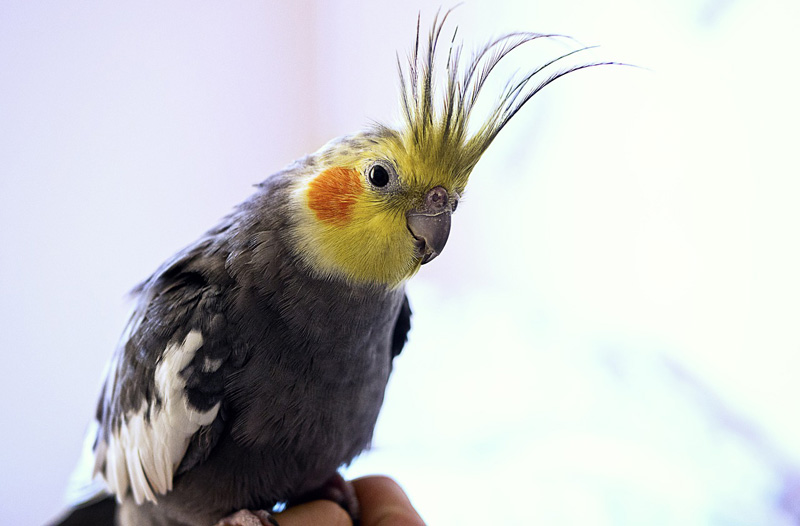
Watch your bird’s weight. One way to tell if a bird is overweight is to wet the feathers on the bird’s abdomen with alcohol. If you see a yellowish substance (fat) or coloring under the skin, it is overweight. Check with a veterinarian about a good diet for your bird. You don’t want your pet to die of fatty liver due to a poor diet. Sometimes we think we are doing our birds a favor in providing them unlimited access to good foods but, without limits, even good foods can become a bad thing.
Cages
I recommend the largest cage you can afford. I have two parrotlets in an 18″ x 18″ cage, but feel it is awfully small for a cockatiel. If a bird is out of its cage a majority of the day, then an 18″ cage might do. I believe cages which have more floor space are much better, especially for birds who spend a lot of time in them. Since cockatiels are ground feeders in nature, a larger space gives them more room to move about.
Use a grate on the bottom of the cages. This keeps the birds from eating their droppings and spoiled/discarded foods which can be a major cause of bacterial and fungal problems in captive raised birds.
I personally don’t have my babies or my pet cockatiels in cages as such. I made an acrylic playground for them with lots of perches, ladders and swings and they love it. But, my breeders are all in cages.
Perches
Try to provide a variety of perch sizes and materials. Perches with varying diameters and shapes, such as branches, help exercise the feet. If a bird is using the same size perch all the time, it can cause foot problems later in life. I have some natural perches (made from untreated apple trees), wooden dowels of different dimensions (the average being 1/2″), and some cement perches for grooming purposes. I’ve found most of my birds love the cement perches and prefer them over all others. If you use natural perches, please, make sure you are using safe wood and only from trees which have never been treated.

Toys
Cockatiels are intellegent and can become bored. Providing your bird with lots of toys in the cage will keep him entertained, especially if he is alone. Wood toys are also good for keeping beaks trimmed. Use a variety of toys and rotate them. You can buy bird toys or make your own from items around the house or purchased at craft stores. The possibilities are unlimited.
One example is offering your bird q-tips to play with. Cockatiels love tearing them apart and then leaving the remainder in the water dish. Or, if you want to watch something really comical, give your tiels a few pieces of spaghetti. He’ll have it wrapped around his neck like a big necklace.

Spending Time with your Cockatiel
Spend time with your bird. Talk to him as you pass by or work near the cage. Take your cockatiel out of the cage each day. Give him time out on a playpen and time playing with you.
How much time will your tiel require out of the cage? That depends on the individual bird. The easiest way to have a happy, lovable pet cockatiel is to spend as much time with him as you can. A handfed or tame cockatiel will remain tame if you take him out and play with him for only an hour a day. But, the more time you spend with your bird, the more loving and tame he will be.
If you want your cockatiel to be a member of the family, include him in your daily life. Provide a playpen or perch where he can enjoy his toys and be part of family activities. When you eat, offer your cockatiel some of the healthy foods. This provides variety in the diet as well as interaction with you. If you are watching TV, allow your bird to join you. My cockatiels like to line up on their perch to watch television. It’s rather funny to watch them fight for their favorite spot so they have a better view of the TV.
Even some of my cockatiel breeders need daily contact. When they fight at the cage door to see who can get out to ride on mama first, I know they need interaction with humans even though they are in flights with other birds. I have some birds that are parent raised who only need to be talked to and whistled with daily. I have others that jump onto the cage door as soon as I enter the room. These get time to take a flight or two around the room and some scritches and then back to the cage they go (these are my future breeders or those I want to keep tame for future pet owners). My babies are in the playpen all day everyday. They come out several times a day for feedings and for scritches and kisses. They love having the back of their necks rubbed and their head feathers preened. I generally take their feathers and pull very gently on them. The birds seem to see this in the same way they see mutual preening and therefore see me as a member of the flock
Cockatiel Training
The most important thing you can train your bird to do is to step up. This is the first command you should teach your cockatiel. You can teach a cockatiel to step up by gently pressing your fingers up under the chest, just in front of the feet. While doing this, say UP or STEP UP. The bird will learn very quickly what you want when you tell him to step up.
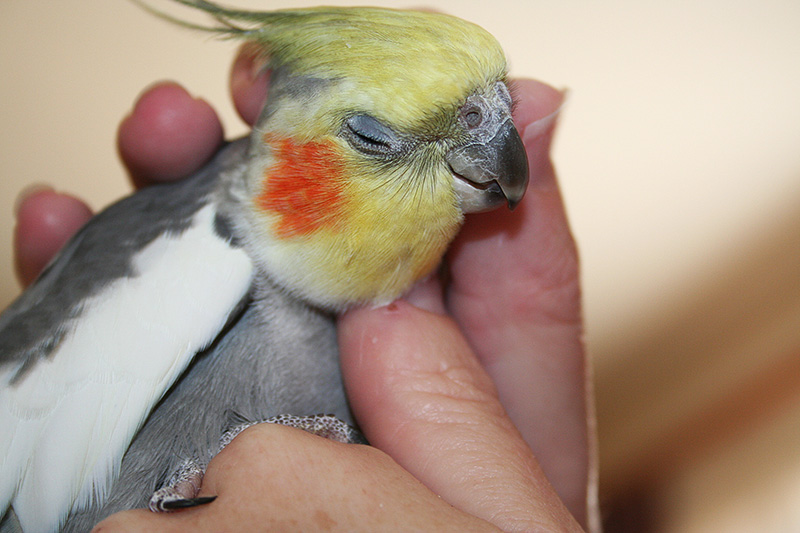
The reason this command is so important is that in an emergency or when your bird is doing something you don’t want them to do, you can walk up to him, give the UP command and he should do it without hesitation. It can get a bird out of some potentially dangerous situations. I’m sure since cockatiels learn this trick so quickly, with work they can learn other tricks as well. I just haven’t worked with mine in that way.
Bathing
Bathing is natural for tiels. It helps keep feathers clean and skin moist. It also keeps down the amount of dust the cockatiels put out. Most cockatiels even like showering with their owners. Just place them on the shower rod or you can even purchase special shower perches for them. You can also use a mister, a dish with water or the kitchen sink.
Night Frights
Cockatiels fear being unable to see things at night. They can have what is referred to as “night frights” which almost looks like some sort of seizure. They’ll flap around the cage wildly and can even injure themselves. I have found that feeding my birds about 1/2 hour before lights out and not covering their cages have help eliminate night frights in my birds. If I do cover a cage, I don’t cover totally, but leave at least one side uncovered. Generally I haven’t had a problem with night frights since I changed the feeding time to just before their bedtime. I feed them fresh food during the day and give their seeds and pellets at night.
During a night fright, some feathers will often get damaged. If one of these happen to be a blood feather, try to remain calm and remove it. If you don’t and the bird has further frights or bangs the broken feather on something, it can continue to bleed. Too much blood loss a small bird can cause it’s death.
To remove a broken blood feather you would grasp it with a needle nose pliers close to where it enters the skin. Generally it is a wing or tail feather. In this case, hold the wing or tail where you will be removing the feather. Jerk firmly on the feather with the pliers to remove it. Using your fingers, place firm pressure on the spot where the feather was removed until all bleeding stops, usually a minute or two.
If you cannot stop a blood feather from bleeding, this is an emergency. Call your vet immediately.
Veterinarians
When I sell baby cockatiels, I recommend that the new owner takes the bird to the vet for a well baby exam. I recommend including bloodwork and grams stains in the exam. Pet bird owners should become familiar with a vet who sees birds as soon as possible after purchasing one. You want to make sure you purchased a healthy bird, but you also want to have a veterinarian to visit in case of an emergency.
A vet needs to see your bird in good health to have a basis of comparison should he become ill. After the initial exam, I would recommend at minimum a yearly check-up for any pet bird. Sometimes birds can hide potential problems and like people, it’s wise to see the doctor even when things appear normal because sometimes the vet could catch a problem before it becomes something serious. I also feel it is important to know your vet before you need them. Be sure to select a vet who knows about birds. They are very different from dogs and cats.
Please follow us on Pinterest and enjoy our collection of recipes, crafts, fitness, health tips, gardening, DIY and more…
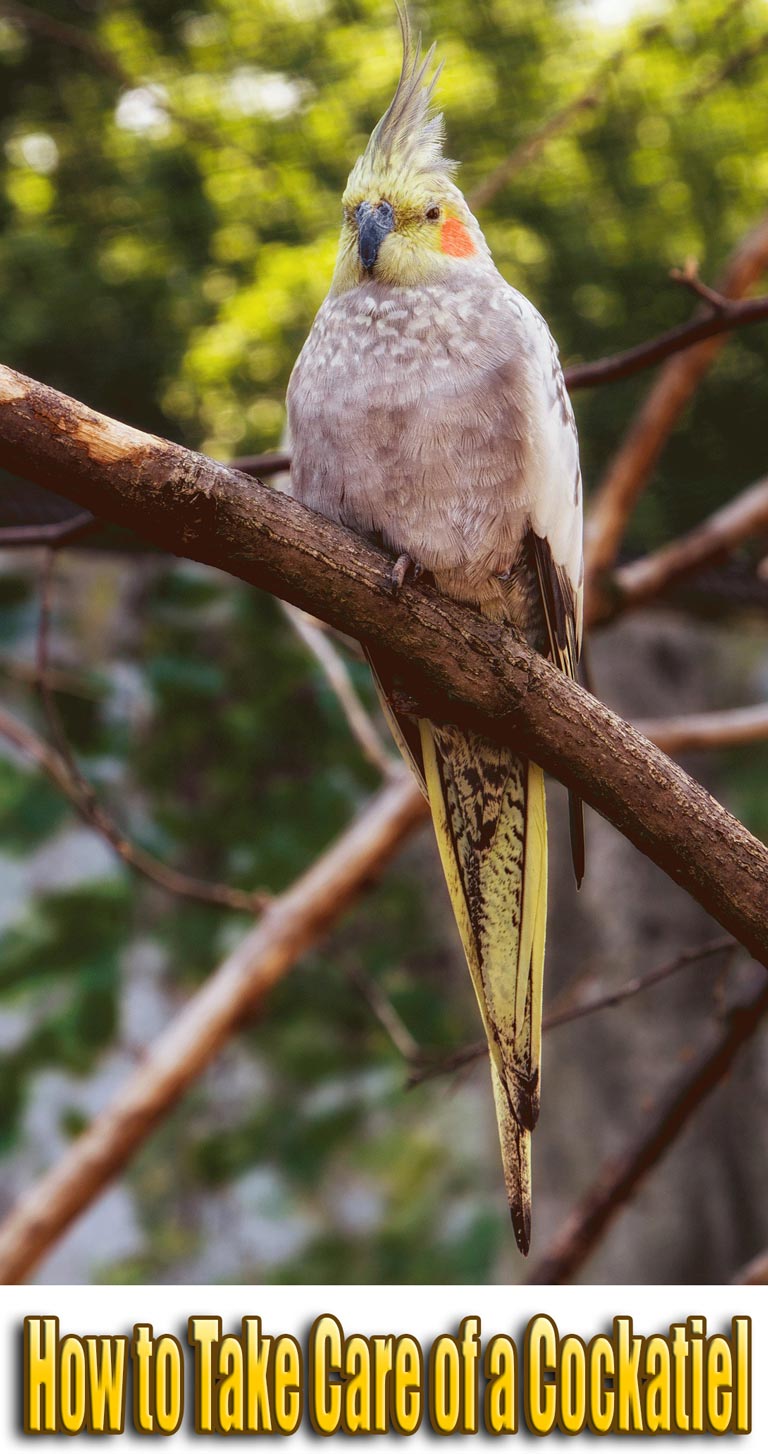

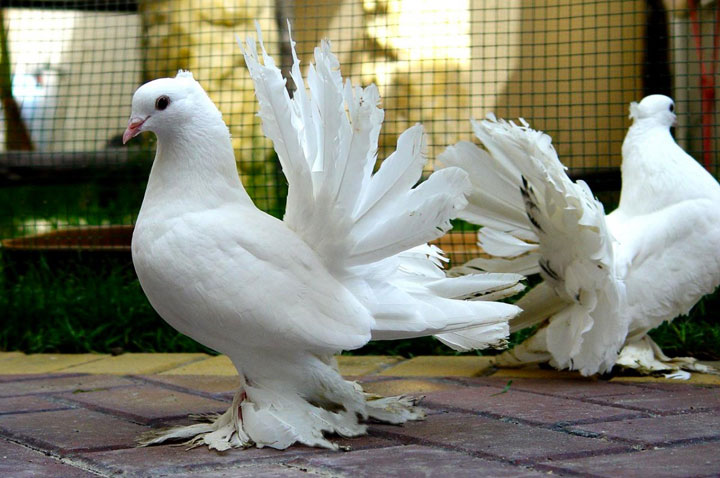
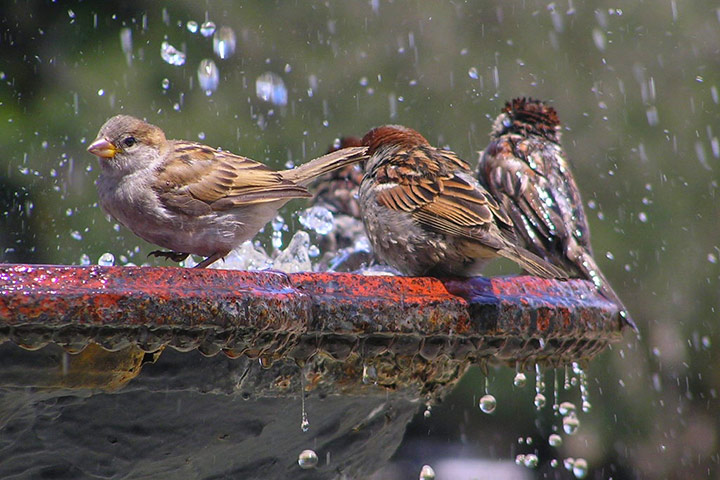

Thank you, so informative, recently acquired grey cockatiel which landed in friends back yard, since having experience w/cockatiels, friend requested if I would take possession, without hesitation accepted this great looking cockatiel. Currently member of Pinterest, and 2 tour Vietnam Veteran retired Whse. Mgr.